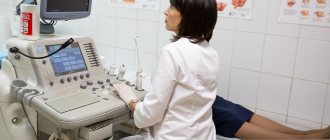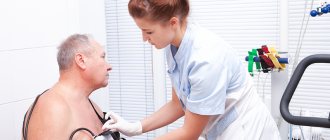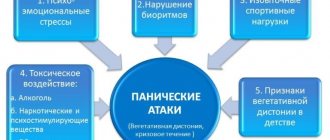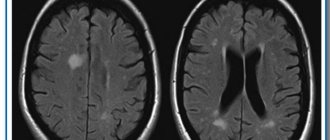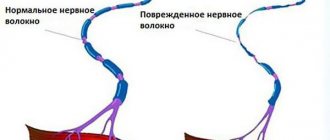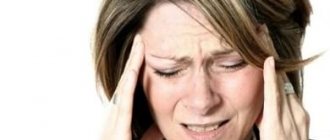Organic lesions of the central nervous system are a group of various neuropsychic disorders that develop as a result of the influence of various pathological factors on the brain at different stages of ontogenetic development. This pathology has many variations and different development mechanisms.
Pathogenesis and, accordingly, clinical manifestations of cerebral-organic disorders depend on:
- from the causes of the defeat;
- the period in which the brain damage occurred;
- localization, intensity and depth of damage to brain structures;
- the time that has passed since the onset of the disease that led to brain damage.
If unfavorable factors impact the fetus at the embryonic stage of development, severe developmental defects incompatible with life may occur.
Damage to the central nervous system can occur in a child at different periods: during fetal development (antenatal), during childbirth (intranatal) and after the birth of the child (postnatal).
The classification of organic lesions of the central nervous system in children in the modern world is usually based on the causes and mechanisms that can lead to damage to the central nervous system in newborns or older children. According to this classification, there are 4 groups of perinatal central nervous system disorders:
- traumatic lesions of the central nervous system in newborns. Such a case is a leading accompanying factor in damage to the tissues of the central nervous system during childbirth or the first hours of a child’s life;
- hypoxic damage to the central nervous system: the main factor of damage is lack of oxygen;
- toxic-metabolic and dismetabolic lesions of the central nervous system in newborns: the damage factor in this condition is a metabolic disorder in the child’s body during the prenatal period;
- damage to the central nervous system in children due to infectious diseases: the main damaging effect is exerted by an infectious agent (usually a virus).
Causes of organic damage to the central nervous system in newborns
- Somatic diseases of the mother
- Taking medications during pregnancy
- Mother's bad habits
- Stress
- Maternal malnutrition
- Immaturity of a pregnant woman
- Acute infectious diseases during pregnancy
- The presence of hereditary diseases associated with damage to the central nervous system in children at an early age
- Metabolic disorders in a pregnant woman
- Pathological course of pregnancy
- Unfavorable environmental conditions (sudden changes in temperature and pressure)
- Exposure to radiation, toxic substances
Intranatal causes are the pathological course of childbirth, natal (birth) trauma.
Postnatal causes:
- Ischemic or hemorrhagic stroke
- CNS injuries
- Neuroinfections
- Tumors of the brain and spinal cord.
F03 Dementia, unspecified
Presenile:
- dementia NOS
- psychosis NOS
Primary degenerative dementia NOS
Senile:
- dementia: - NOS - depressive or paranoid type
- psychosis NOS
If necessary to indicate senile dementia with delirium or acute confusion, use an additional code.
Excludes: old age NOS (R54)
More details
Symptoms of damage to the central nervous system
- Speech disorders. There is a late development of speech, a poor vocabulary, and in severe cases, a complete absence of speech skills: children with this type of central nervous system damage are able to pronounce only sounds and some single words.
- Motor impairment. Children with organic pathology of the central nervous system later begin to hold their heads, sit, and walk. Voluntary movements are impaired, which causes difficulty in eating, playing, and self-care.
- Mental disorder. An organic lesion of the central nervous system in a child is indicated by his poor performance in school and kindergarten.
In parallel, the following problems may arise: impaired memory, logical thinking, developmental delays, intellectual disability (from a slight decrease in intelligence to debility, idiocy, mental retardation), defects in the perception of the surrounding world, new information, inability to learn. Damage to the central nervous system in children must be treated immediately by making an appointment for diagnostics at our medical center. The sooner complex treatment of lesions of the central nervous system in children is started, the higher the chances of a completely successful outcome.
Such children are characterized by increased excitability or, conversely, inertia.
Possible outcomes of organic brain damage:
- Almost complete recovery. This is said in the absence of any noticeable defects in the presence of damage to the central nervous system in newborns
- Manifestations that do not pose a threat to life, but to one degree or another limit work activity and self-care.
- Gross violations - a person is bedridden and needs constant outside care.
The outcome of the disease directly depends on the timeliness of diagnosis, correct comprehensive treatment, and also on the age of the patient.
Variants of the course of organic mental disorders
Organic mental disorders can be acute (for example, delirium, organic hallucinosis), which arise suddenly, and chronic, which begin unnoticed, flow slowly and, most often, irreversibly (dementia, organic personality change).
The most common causes of organic brain lesions are trauma, infection, intoxication, tumors, primary degenerative processes and vascular lesions of the brain.
Psychoorganic syndrome occurs in four variants:
- asthenic (exhaustion, irritability with intact intelligence),
- explosive (explosiveness, aggression, slight memory loss),
- euphoric (elevated mood, carelessness, disinhibition of drives) and
- apathetic (apathy, decreased interest in the environment and one’s own life, marked memory loss)
These four options are sequential stages of the course of organic brain disease.
How are pathologies of the nervous system treated?
As in all other cases, treatment should begin as early as possible. The first step is to contact a neurologist and undergo diagnostics. Standard examination methods:
- general tests;
- MRI;
- CT.
Treatment is usually complex, using different means:
- medicines;
- procedures (physiotherapy);
- physiotherapy;
- surgical intervention.
Alalia is an organic disorder (underdevelopment) of speech of a central nature. With alalia, there is a delay in the maturation of nerve cells in certain areas of the cerebral cortex. Nerve cells stop their development, remaining at a young immature stage - neuroblasts. This underdevelopment of the brain can be congenital or early acquired in the pre-speech period - organic brain damage with alalia occurred in the prenatal or early postnatal period. Conventionally, the pre-speech period is considered to be the first three years of a child’s life, when the cells of the cerebral cortex are intensively formed and when the child’s experience of using speech is still very small. The development of the brain systems most important for speech function does not end in the prenatal period, but continues after the birth of the child.
Underdevelopment of the brain or its early damage leads to a decrease in the excitability of nerve cells and to changes in the mobility of basic nervous processes, which entails a decrease in the performance of cells in the cerebral cortex.
The study of the pathophysiological mechanisms underlying alalia reveals a wide irradiation of the processes of excitation and inhibition, inertia of the main nervous processes, and increased functional exhaustion of cells in the cerebral cortex (I. K. Samoilova, 1952). Researchers note a lack of spatial concentration of excitatory and inhibitory processes in the cerebral cortex. A study of the electrical activity of the brain in children with alalia revealed clear local changes in biopotentials mainly in the temporo-parieto-occipital regions, in the frontotemporal and temporal branches of the dominant hemisphere (L. A. Belogrud, 1971; A. L. Lindenbaum, 1971; E. M. Mastyukova, 1972).Recent studies show that with alalia there are mild but multiple damage to the cerebral cortex of both hemispheres, i.e., bilateral lesions. Apparently, with unilateral brain damage, speech development occurs due to the compensatory capabilities of a healthy, normally developing and functioning hemisphere. With bilateral injuries, compensation becomes impossible or severely difficult. Thus, the previously existing point of view about the narrow local nature of damage to the speech areas of the brain (the cortical end of the speech-auditory and speech-motor analyzers) is not confirmed.” (Volkova L.S.)
Alalia forms.
Alalia motor (expressive). “Alalia is an underdevelopment or gross disturbance of the development of speech in a child, occurring in the pre-speech period, having a systemic nature and caused by pathology of the central nervous system of certain areas of the cerebral cortex….
The fact that alalia is determined by the pathology of the central nervous system in the pre-speech period indicates that alalia is a consequence of some early pathological influences on the child’s brain. The attribution of the pathology primarily to the level of the cortex indicates that the pathological process involves mainly not the elementary, musculomotor or sensory, but the higher parts of the central nervous system, which are closely related to thinking.”
Expressive speech is realized through different levels of the brain. At the gnostic-praxic level, articulatory praxis is carried out: afferent (kinesthetic) is associated with the functioning of the lower parietal (postcentral) zone, efferent (kinetic) articulatory praxis is provided by the premotor cortex of the brain. At the symbolic (linguistic) level, the brain mechanisms of speech are relevant for the phonological (phonemic) system of language, and also for the lexical and syntactic system. Within the framework of the lexical system of language, the main type of speech activity is naming - a function that is carried out primarily by the tertiary (temporo-occipital) zone on the left (according to E.P. Kok).
The brain organization of the syntactic system of language (phrasal speech) has the most complex multi-level structure. At the level of deep (“nuclear”) syntax, the frontal lobes of the brain play a major role. The core syntactic structure of a phrase is, “essentially”, its extremely compressed program.
It is distinguished by a high degree of logic and, therefore, is close to mental activity as a whole. The surface syntactic structure of a phrase is a “reversal” of its nuclear part. It is carried out mainly due to the posterior frontal parts of the left hemisphere, where typical models of phrases are “stored”, as well as due to the parietal lobes of the brain, responsible for morphological language operations.” (Wiesel T.G.)
Main directions of correctional work:
· Early start of correctional speech therapy work (from 2-2.5 years old) gives the best results. This allows you to avoid the appearance of secondary symptoms - arrest of intellectual development, the appearance of speech negativism, psychological layers. · Work with a non-speaking alalik child should begin with the formation in the child of a desire to use verbal speech.
· The main purpose of speech therapy work for motor (expressive) alalia is the formation of the lexical and grammatical side of speech, learning to use independent coherent speech. · Since the mechanism of motor alalia is the unformation or inferiority of various neural connections in the CGM (interhemispheric and interanalyzer), recruitment, expansion and clarification dictionary, mastering all possible grammatical models of the Russian language requires very long work. It is recommended to use an integrated approach, when specialists and parents work with the child not only on speech, but also on general motor skills, the development of non-verbal intelligence, the development of visual perception, accompanying all the child’s activities with speech.* Read more in the language concept
.Alalia sensory (impressive).
“Impressive speech (speech perception) is carried out primarily through the left temporal cortex. At the same time, the primary fields of this area, being the cortical end of the auditory analyzer, provide (together with the primary fields of the right temporal lobe) physical hearing. Due to secondary fields, the function of speech auditory gnosis is acquired and used in the future, i.e. the ability to recognize (distinguish) speech signals. Thanks to the activity of the cortex at the level of tertiary fields, the formation and further use of the phonemic system of the language is ensured. This is accomplished by the overlap zone of the temporal, parietal and occipital lobes (TPL). She is also responsible for understanding complex logical and grammatical figures of speech.” (Wiesel T.G.)
Main directions of correctional work:
· Corrective work should begin as early as possible. · The main task of speech therapy work for sensory alalia is the development of understanding of addressed speech. · Corrective work should begin by limiting auditory information around the child (radio, TV).
· The initial set of understandable vocabulary is carried out through familiarity with real objects and actions.
· New words are presented to the child in an unchanged form. Inflection begins when the word is well mastered, thus the child is introduced to each form of the word. · Corrective work with the sensory alalik can be based on the visual analyzer. Therefore, a child with sensory alalia begins to be taught global reading and the development of phrasal speech with the help of diagrams as early as possible.
· Attention should be paid to the development of phonemic hearing (perception, analysis, attention), the development of thinking, memory, perception, attention through intact analyzers.
F05 Delirium not caused by alcohol or other psychoactive substances
An environmentally nonspecific organic cerebral syndrome, characterized by simultaneous disturbances of consciousness and attention, perception, thinking, memory, psychomotor behavior, emotions, sleep-wake cycles. The duration of the condition varies and the severity ranges from moderate to very severe.
Included: acute or subacute:
- brain syndrome
- state of confusion (non-alcohol etiology)
- infectious psychosis
- organic reaction
- psychoorganic syndrome
Excludes: delirium tremens, alcoholic or unspecified (F10.4)
More details

